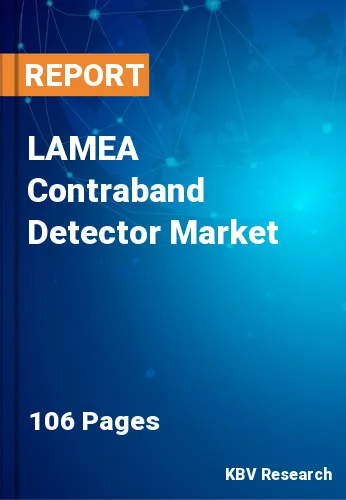The Latin America, Middle East and Africa Contraband Detector Market would witness market growth of 9.3% CAGR during the forecast period (2021-2027). Thermoelectric modules are highly used in various industries like a laboratory, automotive, consumer electronics, medical, semiconductor, defense, aerospace, and telecommunications.
Thermoelectric modules are of three types, thin thermoelectric modules, micro thermoelectric modules, and bulk thermoelectric modules. Micro thermoelectric modules are usually used in automotive, lasers and LEDs, and photodiodes, and arrays. Thin-film thermoelectric modules find their applications in sensors and detectors as well as consumer electronics applications. Moreover, single-stage thermoelectric modules are appropriate for heating and cooling applications as they need medium or high pumping capacity.
Infectious diseases are the major cause of deaths or disabilities in infants, young children as well as the older population in rural parts of Africa. In order to prevent infectious diseases, the vaccine is the most effective and cheapest method. Vaccines if not preserved and carried properly get exposed to heat or when it is frozen, it may lose their potency. The World Health Organization (WHO) set storing standards of vaccines such as vaccines must be stored within 2 - 8 ?C. So manufacturers use thermoelectric technology as a heat pump in order to design a vaccine cooling holder. The efficiency and effectiveness of the cooling holder are estimated on the basis of the cooling capacity of the module. The power supply cost increases with the rise in power consumption as the power ratings of the photovoltaic panels and batteries also increase to supply sufficient power to the Thermoelectric Cooling Modules (TECMs).
There are many benefits of thermoelectric modules but some factors can hamper and challenge the market growth. The TE modules involve complex engineering designs and they are comparatively more expensive than the traditional thermos-cooler system. These two factors are the major barriers to the growth of the global Contraband Detector Market. However, the technological advancements including the concept of converting body heat into electricity are expected to bring remarkable opportunities for the growth and profit ratio of the Contraband Detector Market in the coming years.
The Brazil market dominated the LAMEA Deep Cooling Contraband Detector Market by Country 2020, thereby, achieving a market value of $6.7 million by 2027. The Argentina market would witness a CAGR of 11.7% during (2021 - 2027). Additionally, The UAE market is expected to witness a CAGR of 10.7% during (2021 - 2027).
Based on Offering, the market is segmented into Hardware and Services. Based on Type, the market is segmented into Bulk, Micro and Thin-Film. Based on Model, the market is segmented into Single Stage and Multi Stage. Based on Functionality, the market is segmented into General Purpose and Deep Cooling. Based on End User, the market is segmented into Consumer Electronics, Automotive, Industrial, Medical & Laboratories, Manufacturing, Telecommunications and Others. Based on countries, the market is segmented into Brazil, Argentina, UAE, Saudi Arabia, South Africa, Nigeria, and Rest of LAMEA.
Free Valuable Insights: The Global Contraband Detector Market is Predict to reach $6.6 Billion by 2027, at a CAGR of 7.5%
The market research report covers the analysis of key stake holders of the market. Key companies profiled in the report Smiths Group PLC, Godrej & Boyce Mfg. Co. Ltd. (Godrej Security Solutions), OSI Systems, Inc., Leidos Holdings, Inc., Nuctech Company, Ltd. (Tsinghua Tongfang Co., Ltd.), Metrasens Ltd., ADANI Systems, Inc. (LINEV Group), Berkeley Varitronics Systems, Inc., CEIA S.p.A. (Costruzioni Elettroniche Industriali Automatismi), and Campbell/Harris Security Equipment Company.
By Deployment Type
By Application
By Screening Type
By Technology
By Country
Our team of dedicated experts can provide you with attractive expansion opportunities for your business.

